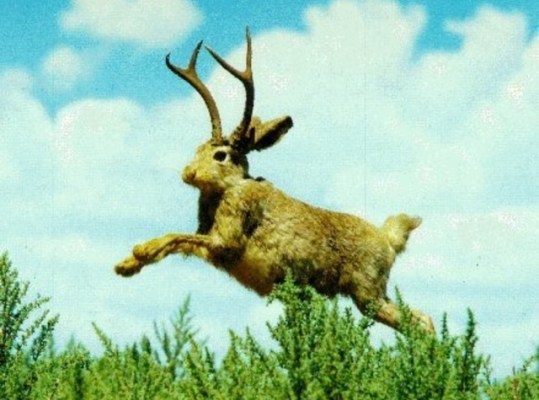Here’s a rather unfortunate development: The proliferation of recording devices and instant distribution is matched by our ability to falsify the information they produce. While they don’t exactly cancel each other out, they do have the awkward effect of turning an age of the most rigorous documentation into an age of jaded (and justified) suspicion.
Take this business of the meteor. I don’t mean the imperturbable Russian who lowered his visor against a cosmic event of beauty and sublimity. I mean the rest of us. Be honest: How many of you, upon first seeing video of the meteor, immediately began thinking of the ways this could be a hoax or viral stunt? Would there be several more videos like this, and when they investigate, it turns out the meteorites were huge Skittles? That’s certainly what I thought, or along those lines.
Or perhaps you remember the amazing photograph published by Reuters of the becrutched Libyan rebel firing an RPG. It was so incredible that to many, it was literally incredible, and immediately a campaign was waged to expose this obvious fake. Of course, it turned out to be a completely genuine (and stunning) piece of photojournalism.
On the other end of the spectrum, consider the fabricated video of the golden eagle snatching a kid. A similar skeptical effort was engaged in over that, but it had its defenders as well. After all, it looked quite real, even if in retrospect one can pick out some slightly stiff animation.
Indulge me in a little thought experiment, though. What if the video was a little better-done, and for some reason the creators and their friends agreed to never speak of it again? I don’t think it’s such a stretch to suggest that the video would be entered into the ledger of history as fact. Golden eagles would be on the record as having attempted to carry off children in city parks. Their fabrication would have become truth.
Of course, that didn’t happen. But do you really think it never has?
Sure, we catch a few in the act. War photographers, or their editors, have been attempting to tart up scenes for years with a little extra smoke, or cropping out a McDonalds, or what have you. Sometimes their clone-stamp antics are detected — good for us. But it won’t always be that easy, and the stakes aren’t getting any lower.
How long before a murder case turns on a faked photograph that can’t be proven beyond a reasonable doubt to be so? How long before a politician loses his seat because someone made a sex tape with his face superimposed skillfully enough that no one would doubt it? How long before a war is touched off because of a set of “leaked” photos of a plutonium-enriching facility?
The truth has always been something of a matter of trust rather than absolute knowledge. But that distinction has always been somewhat academic — a matter for epistemologists to discuss with ethicists. The day is not far off, you can be sure, when the inability to tell the difference between a fake and real document (in the broadest sense of the word — a record of an event) is something we have to deal with every day. Counterfeit is the new real, and vice versa.
In a way, we’re no worse off than we were before. It didn’t take long for the photograph, for a time unimpeachable in its veracity, to be abused and made a tool for fiction as much as anything else. Fakes and frauds are a part of nature. But it’s getting to be difficult to accept the validity of any event or piece of media whatsoever, a situation that may stress our organs of skepticism to the point of harm.
It’s likely a wild goose chase, going after things like authenticity, truth, and permanence at a time when those are increasingly relative terms. But they happen to be important, at least to me, so we should at least keep an eye on the state of things (sad as it may be). To paraphrase that great epistemologist, Donald Rumsfeld, we must question our known knowns and admit our known unknowns.
